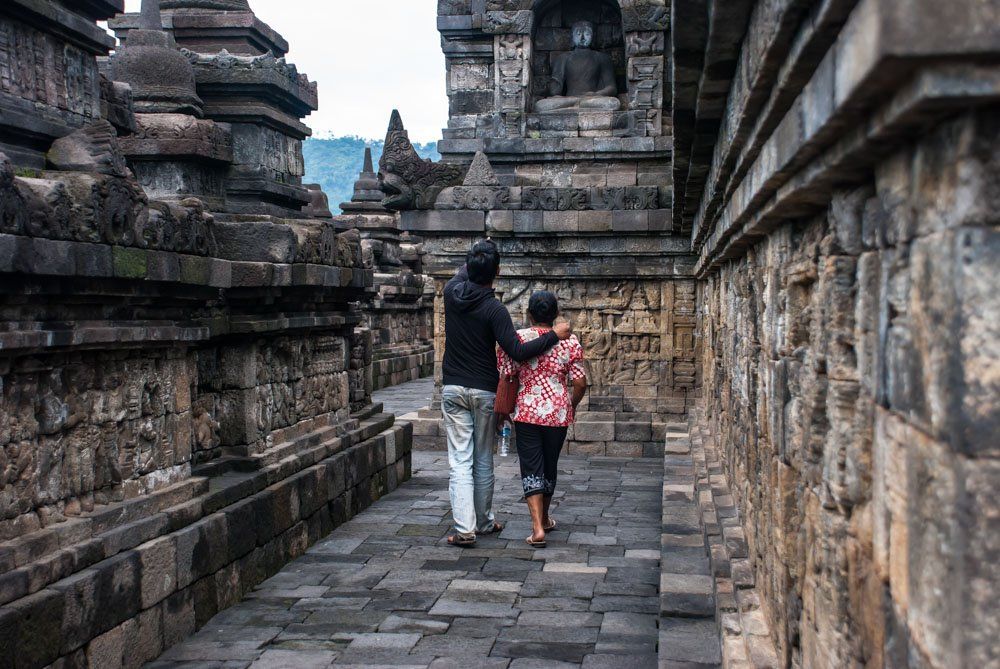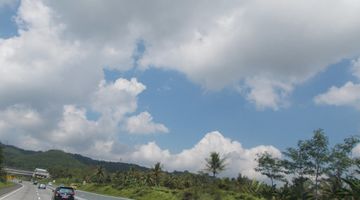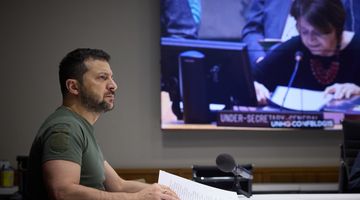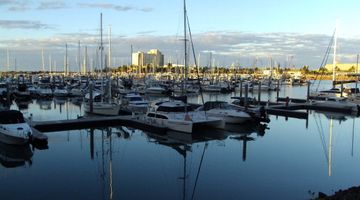Borobudur Temple – Opening Hours, Tickets, Story and Useful Tips for Visiting
Beautiful Borobudur Temple has the claim to fame of being the largest Buddhist temple of its kind in the world and is located just outside the city of Yogyakarta in Central Java, Indonesia. As this is one of the most famous monuments in the country, no trip to Java is complete without taking in this amazing man-made wonder.
Temple Story
Borobudur is a UNESCO World Heritage Site and it is thought to date from the 8th century although some scholars disagree on its exact age. It is also unclear exactly who built Borobudur and why although it is thought to have been part of the Sailendra Dynasty and would have taken around 75 years to build. To add to the allure of the history of the temple, it was known to have been abandoned for centuries as it was covered by ash from a nearby volcano and then obscured by the surrounding jungle. The reasons why it was abandoned have never been discovered although it thought that it may have been linked to the rise of Islam in Indonesia. It was rediscovered in 1885 by the British governor Thomas Stamford Raffles and returned to its former glory, being fully restored in 1907.
Why is Borobudur famous?
Nowadays Borobudur is famous for its size and for its amazing sculptures and art work which is etched into the walls of the temple. This meant that it was declared a UNESCO World Heritage Site in 1991 and tourists can now admire the pretty stupas, bas reliefs and ornate statues that are located all over the complex. It is also now used as a famous pilgrimage site for Buddhists in the region and is particularly busy around important Buddhist days of worship. It is also located close to the neighboring Prambanan Temple, which was built at the same time and is a Hindu temple; so many people visit both of these at the same time to see two different styles of ancient architecture.
What is Borobudur Temple made of?
Borobudur Temple is made of andesite stone which is dark grey in color which sets it apart from other temples in the region which are usually made of temple stone which is considered an inferior kind of building material which doesn’t have the signature brooding tones of andesite. The temple is made up of some six platforms which are square in shape and these are topped by another three platforms which are round. There are over 2,500 bas reliefs around Borobudur and 504 statues of the Buddha. On the central dome which is located in the middle of the upper level platform there are 72 statues of the Buddha which each sit on a stupa.
Borobudur Entrance Fees and Visiting Hours
It costs IDR 325,000 for adults to visit Borobudur and this is the price for foreign visitors although if you have a work or residence permit in Indonesia called a KITAS then you can visit the site for just IDR 30,000. This is also the price for Indonesian visitors. Children and students who have proof of student status can buy a ticket to visit Borobudur for IDR 190,000. You can also buy a package tour of both Borobudur and neighboring Prambanan Temple which costs IDR 520,000 which is valid for two days. Student combination tickets cost IDR 325,000. You can visit the temple from 6 am to 5 pm and it is open every day. If you want to hire a guide then they usually cost around IDR 100,000 per hour although this depends on your negotiation skills.
What to See In Borobudur
When you visit Borobudur there are a number of areas to check out including inside the main structure. This consists of a central platform at the base which is known for its bas reliefs, some of which have been restored. This then leads to six square terraces which are linked by stone steps and have bas reliefs along the sides which tell you the story of the lives of the Buddha and his journey to enlightenment.
Make sure you start at the East Gate and then move around the terraces in a clockwise direction to follow the story chronologically. There are three round terraces above the square terraces and these are known for their stupas which have Buddha statues on them. There is also a central stupa although this is empty.
Also make sure that you check out all the bas reliefs as you walk around Borobudur which are known to tell the teachings of the Buddha. There are over 2,500 wall reliefs that tell various stories such as the Law of Karma, the Birth of Buddha, The Jataka and Avadanas and the Journeys of Sudhana Searching for Ultimate Truth.
Also on site are two museums which are part of the wider Borobudur Archeological Park. These include the Karmawibhanga Museum which is open from 6 am to 6 pm every day and which is free to enter once you have purchased a ticket for the Borobudur complex. The museum has a range of pieces such as statues from around Borobudur and you can also learn how the temple was painstakingly restored. There are also explanations of some of the stories of the bas reliefs found around Borobudur.
The other museum onsite, which is also free to enter if you have a main complex ticket, is the Samudraraksa Museum which is known for having a scale model of the Borobudur Ship. This museum is therefore dedicated to telling the story of maritime history in Indonesia in the 8th century and you can learn about some of the bas reliefs in Borobudur which tell the story of ocean liners that would have served the famous Cinnamon Route around the so-called spice islands of Asia and Africa. These bas reliefs were discovered by Philip Beale, a British naval scholar, in 1982 who then built a model of the ship using the images on the bas reliefs and this makes a great stop off if you are interested in maritime history.
Attractions around Borobudur
If you are in Borobudur and want to explore the surrounding area then you can check out a number of nearby attractions such as the Kedu Plain which is a collection of Buddhist and Hindu ruins which were built in the same period as Borobudur.
These include Candi Pawon which is around two kilometers away from Borobudur and Candi Mendit which is a Buddhist temple that was discovered in 1834. You can visit both temples for IDR 3,500 for a combination ticket.
Other temples in the area include Candi Ngawen, Candi Canggal and Candi Selogriyo.
Also close to Borobudur is the quaint market town of Muntilan. The main reason why people visit here is to buy stone souvenirs which are carved to look like the stupas, bas reliefs and statues in Borobudur.
Tips Your Visit
If you want to see Borobudur in all its glory then it is recommended that you visit for the sunrise which means you need to take a tour such as the Borobudur Sunrise Tour which is run by the neighboring Manohara Hotel and costs IDR 450,000. This gets you to the temple around 4 am which gives you plenty of time to take in the gorgeous early morning views, particularly on a clear day. If you are going to visit the temple on your own without being part of a tour then you can enter the complex around 6 am which will also allow you to catch the early morning light although the sunrise starts around 5.30 am. If you visit the temple later in the day then you may find that it is very crowded and also very hot.
When we visited we were asked to take photographs repeatedly and this can be an issue if you want to explore the temple under your own steam. The temple stones also absorb the sunlight during the day so the later you go, the hotter it gets. As such, we would recommend going as early as possible to enjoy the cooler weather and beat the crowds.
If you are going to go in the afternoon then make sure you wear plenty of sunscreen and also cover up with loose, long sleeved clothes to avoid getting sunburned. Also make sure you bring plenty of bottled water as you can buy this on site but only in some parts of the temple.
How to get there
The closest airport, and the most convenient to get to Borobudur, is Adisucipto International Airport in the neighboring city of Yogyakarta. This has a range of domestic flights all over Indonesia as well as international flights to places like Kuala Lumpur in Malaysia as well as Singapore.
Once you are in Yogyakarta there are a number of ways to get to Borobudur such as getting a public bus although this can be uncomfortable and confusing. Buses leave from the Jombor Bus Terminal and you can get the Trans-Jogja Bus 2A or 2B which will take you to the Northern Jakarta Bus Terminal where you can change to the Borobudur Bus Terminal which will then take you to the temple. This takes around an hour and a half and costs around IDR 25,000.
You can also get a bus from neighboring Magelang to Borobudur which takes about a hour or you can travel by bus from Semarang which takes three hours.
Many travel agents in Yogyakarta also offer minibus tours to Borobudur which cost around IDR 75,000 but are good value for money as they are much more time efficient.
You can also hire a private car with a driver from Yogyakarta and the drive takes around an hour. You can get a taxi or private car for between IDR 150,000 and IDR 200,000 depending on your haggling skills.
Where to stay Around Borobudur
Where you stay depends on whether you want to take a sunrise tour of Borobudur. If you plan on doing so then it is best to stay in the immediate area and there are a number of hotels to choose from on the roads around the temple. If you don’t mind getting up very early to get to Borobudur or you are planning to visit later in the day then you can stay in neighboring Yogyakarta or Magelang.
Where to eat
There are a number of places to eat around Borobudur which are mostly located close to the main bus station. These are mostly hawker stalls selling traditional Indonesian street food and cool drinks although there are also a few small restaurants and coffee shops located nearby where you can cool off and get a bite to eat. One restaurant nearby is located in the Manohara Hotel which also offers Sunrise Tours and serves local fare as well as some international dishes.


























































